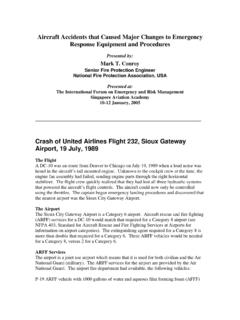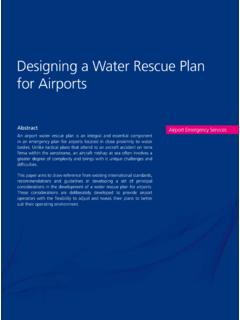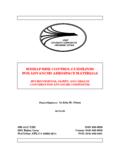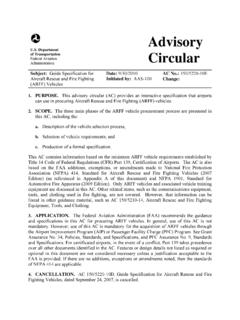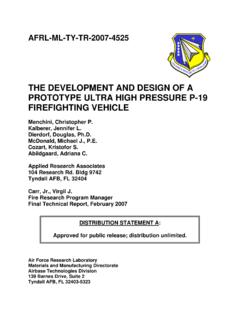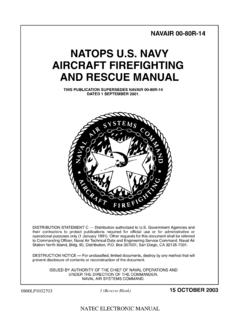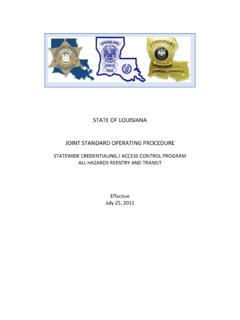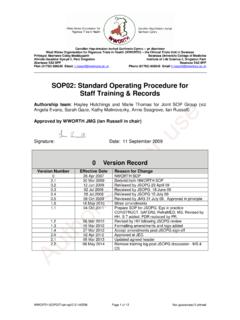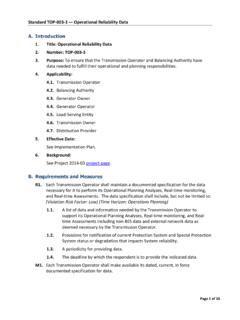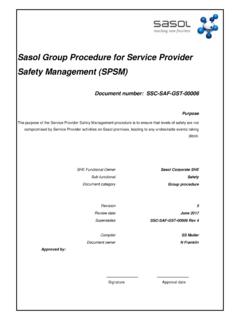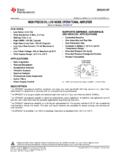Transcription of Operational guidance Aircraft Incidents
1 Operational guidance Aircraft IncidentsOperational guidance Aircraft IncidentsOperational guidance Aircraft IncidentsPublished by TSO (The Stationery Office) and available , Telephone, Fax & E-mailTSOPO Box 29, Norwich, NR3 1 GNTelephone orders/General enquiries: 0870 600 5522 Fax orders: 0870 600 5533E-mail: 0870 240 3701 TSO@Blackwell and other Accredited Agents Crown copyright 2011 Published with the permission of the Department for Communities and Local Government on behalf of Her Majesty s Stationery for reproduction should be made to HMSO, e-mail: ISBN.
2 9780117541085 Printed in the UK by The Stationery Office Limited on behalf of the Controller of Her Majesty s Stationery OfficeID2469685 12/11 Web versionFor the purposes of the web version of this manual we have deleted the blank pages that form the reverse of section breaks in the printed version, hence you may notice that the page numbering is Foreword 52 Preface 63 Introduction 74 Legal framework 13 Introduction 15 Primary fire and rescue service legislation 15 Primary health and safety at work legislation 16 Other subject specific matters 19 Further reading 215 Strategic role of Operational guidance 23 Strategic perspective 25 Values
3 26 Operational guidance review protocols 266 Generic Risk Assessment 27 Introduction 297 Key principles 31 Introduction 338 Fire and Rescue Service Operations 35 Part A Pre-planning considerations 37 Part B Operational considerations Generic Standard Operating Procedure 51 Part C Technical information 731 Introduction to airport terminology and topography 742 Fixed wing Aircraft design and construction 883 Aircraft engines 1024 Aircraft fuel.
4 Fuel tanks and Aircraft systems 1125 Incidents Involving Aircraft undercarriages 1206 Escape slides and access points 126 Contents3 Fire and Rescue Service Operational guidance Aircraft Incidents47 Cargo Aircraft 1348 Helicopters 1419 Military Aircraft 16110 General aviation 19311 Aircraft firefighting and rescue considerations 21012 On airport Incidents 22713 Airport rescue and fire fighting service 23414 Off airport Incidents 2499 Appendices 257A The role of the Police Casualty Bureau 259B Air show management 261C Polymer composites 269D Ministry of Defence search and rescue facilities 279E Hot air balloons 283F Gliders 29010 Acknowledgements 29511 References and bibliography 30112 Record of obsolete or superseded previous Operational guidance 30713 Glossary of terms 3115 ForewordSECTION 1 ForewordMajor Incidents involving Aircraft in the United Kingdom are extremely rare.
5 Such Incidents place significant demands on local fire and rescue services and often require resources and support from other fire and rescue services and emergency responders. However smaller scale Incidents involving Aircraft are more prevalent and these may require a response from any fire and rescue service in Fire and Rescue Service Operational guidance Aircraft Incidents provides robust yet flexible guidance that can be adapted to the nature, scale and requirements of the Chief Fire and Rescue Adviser is grateful for the assistance in the development in this guidance from a wide range of sources.
6 Including the fire and rescue service and the aviation is anticipated that this guidance will promote common principles, practices and procedures that will support the fire and rescue service to resolve Aircraft Incidents safely and and Rescue Service Operational guidance Aircraft Incidents6 SECTION 2 PrefaceThe objective of the Fire and Rescue Service Operational guidance Aircraft Incidents is to provide a consistency of approach that forms the basis for common Operational practices, supporting interoperability between fire and rescue services, other emergency responders, the aviation industry and other groups.
7 These common principles, practices and procedures are intended to support the development of safe systems of work on the incident ground and to enhance national guidance issued by the Department of Communities and Local Government promotes and develops good practice within the Fire and Rescue Service and is offered as a current industry standard. It is envisaged that this will help establish high standards of efficiency and safety in the interests of employers, employees and the general guidance , which is compiled using the best sources of information known at the date of issue, is intended for use by competent persons.
8 The application of the guidance does not remove the need for appropriate technical and managerial judgement in practical situations with due regard to local circumstances, nor does it confer any immunity or exemption from relevant legal requirements, including by-laws. Those investigating compliance with the law may refer to this guidance as illustrating an industry is a matter for each individual fire and rescue service whether to adopt and follow this Operational guidance . The onus of responsibility for application of guidance lies with the user.
9 Department of Communities and Local Government accept no legal liability or responsibility whatsoever, howsoever arising, for the consequences of the use or misuse of the 3 Introduction9 Purpose3 .1 This Operational guidance is set out in the form of a procedural and technical framework. Fire and Rescue Services should consider it when developing or reviewing their policy and procedures to safely and efficiently resolve emergency Incidents involving any The term Aircraft is used to describe all types of flying machines: fixed wing rotary wing (helicopters, autogyro etc) balloons airships gliders remotely piloted air systems (unmanned aerial systems) The above list will cover both civil and military Aircraft .
10 Non Fire and Rescue Service organisations and agencies may use other more specific definitions for their own requirements, but the above definition is the most appropriate one for Fire and Rescue Services to base their risk assessments and planning assumptions A Fire and Rescue Service may respond to a wide range of Incidents involving numerous types of Aircraft . The kind of incident varies greatly and can result in fires, rescues, scene safety and environmental The purpose of this guidance is to assist emergency responders to make safe, risk assessed, efficient and proportionate responses when attending and dealing with Operational Incidents involving Whilst this guidance may be of use to a number of other agencies, it is designed to provide relevant information.
